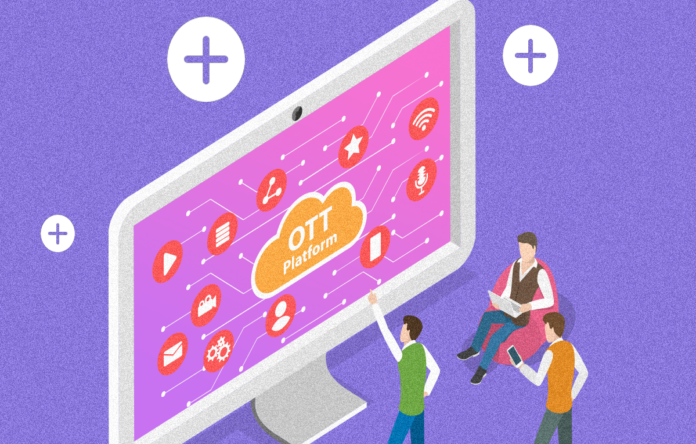In Short:
The Biden administration aims to replace the expired Affordable Connectivity Program, which helped over 23 million families afford internet, by using E-Rate funds for schools and libraries. Jessica Rosenworcel, FCC Chairwoman, visited a school in Los Angeles where parents expressed their need for internet access. Despite opposition from some Republicans and a court ruling questioning funding, Rosenworcel remains optimistic about expanding connectivity for students.

By Kavish Harjai
Efforts to Replace Expired Broadband Subsidy Program
LOS ANGELES – The Biden administration is poised to mitigate the impact of an expired broadband subsidy program, which previously assisted over 23 million families in securing internet access. This initiative will leverage funds from the existing E-Rate program, a federal initiative that aids libraries and schools in providing WiFi hotspots to their communities.
Modernizing E-Rate Program
During a recent discussion with The Associated Press, Jessica Rosenworcel, Chairwoman of the Federal Communications Commission (FCC), indicated that the agency had cast a vote in July to “modernize” the E-Rate program to address some of the voids left by the Affordable Connectivity Program (ACP). This program had previously provided monthly subsidies for low-income families to obtain high-speed internet access. “A lot of those households are at risk of disconnection,” Rosenworcel stated after visiting a Los Angeles elementary school. “We should be clear that it’s not always an on-off switch. It’s about sustainability.”
Challenges Faced by Families
The ACP, part of a broader Biden administration initiative aimed at ensuring affordable internet access nationwide, was not renewed by Congress and consequently ran out of funds earlier this year. Mothers from Union Avenue Elementary School, which comprises a 93% Latino student population, conveyed their urgent need for internet access. They reported that rising costs of rent and food make it increasingly difficult to maintain a stable internet connection. Following their accounts of relying on WiFi in a fast-food parking lot to attend remote doctor appointments and complete their children’s online homework, an emotional Rosenworcel described the mothers’ experiences as “chilling.” “That family and that child are going to have a harder time thriving in the modern world without that connection at home,” she remarked.
Expansion of E-Rate Program
The E-Rate program, established in the 1990s, has provided over $7 billion in discounts for eligible educational institutions to access broadband services since 2022. According to an analysis by The Associated Press, the program has supported more than 12,500 libraries, with nearly half located in rural areas, and approximately 106,000 schools. For the latest funding round, the E-Rate program has also been expanded to include WiFi on school buses, with plans to further extend eligibility to WiFi hotspots starting next year. Rosenworcel noted that the incorporation of WiFi hotspots into E-Rate was a direct response to the failure to renew the ACP.
Local Initiatives and Demand
Alex Houff, who oversees digital equity initiatives for the Baltimore County Public Library in Maryland, shared that the library had launched a WiFi hotspot lending program just before the COVID-19 lockdown in 2020, starting with 50 devices. Currently, the program includes 1,000 devices, yet demand still outweighs supply, leaving over 160 individuals on a waiting list. “Most of the time we were hearing from branches that their communities were borrowing these hotspots because it was their only source of connectivity,” Houff stated. She highlighted that affordability remains the primary barrier to internet access.
Political Opposition and Legal Challenges
The expansion of the E-Rate program has faced criticism from two Republican commission members, who emphasize that E-Rate should support internet access strictly within classrooms and not extend to home or remote learning environments. Nathan Simington, a Republican commissioner, contended that schools and libraries should be regarded as fixed physical locations rather than abstract concepts of education. Following the FCC’s decision to include WiFi hotspots on school buses, a consortium of Republican senators has endorsed a lawsuit to challenge the agency’s rule. Sen. Ted Cruz of Texas labeled the new regulations as an overreach that would “harm children by enabling their unsupervised access to the internet.”
Future Implications for E-Rate
In addition to political disagreements, the E-Rate program faces ongoing threats from the legal landscape. The Fifth Circuit Court of Appeals recently declared the funding mechanism supporting E-Rate and other FCC-managed internet access programs—known as the Universal Service Fund—to be unlawful. John Windhausen, executive director of the Schools, Health and Libraries Broadband Coalition, labeled the ruling as “horrible,” asserting that it contradicts both Supreme Court precedents and other appellate court decisions. He indicated that further litigation is anticipated, with the possibility of the case being reviewed by the Supreme Court.
Looking Ahead
Despite these challenges, Chairwoman Rosenworcel expressed optimism regarding the future of the Universal Service Fund, describing the Fifth Circuit’s ruling as “misguided and wrong.” She emphasized the fund’s significant contributions to ensuring access to modern communication technologies across the country. Furthermore, she asserted that a swift renewal of the Affordable Connectivity Program by Congress could provide a much-needed solution to the ongoing connectivity crisis.





